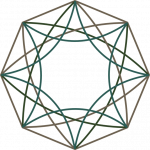Ecosystemic
When ecologist describe the way that different organisms can co-exist, they generally break the various kinds of relationships down into three categories: parasitism, commensal symbiosis, and mutual symbiosis.
A parasite lives on or near its host, benefiting from the host while simultaneously causing it harm. The relationship of most human technology in use today to the surrounding ecosystems would almost all fall into the category of parasitism, using resources from the host biome while only producing waste materials and waste energy.
The goal of most design approaches that aim to be sustainable is to achieve a relationship that could best be defined as a form of commensal symbiosis, where they consume resources from the ecosystem while not actively harming it. The goal is to cause no further harm, but systems designed to this standard often fail at this goal because they end up scaling to a point where they present too great a burden on their host biomes.
The goal of the Integrated Regenerative Design process is to create technologies that are fully ecosystemic. We define ecosystemic in this way:
Ecosystemic – existing within the context of, and fully integrated with, the surrounding biological ecosystems, producing a network of mutually symbiotic relationships that tends to regenerate all affected biomes.

